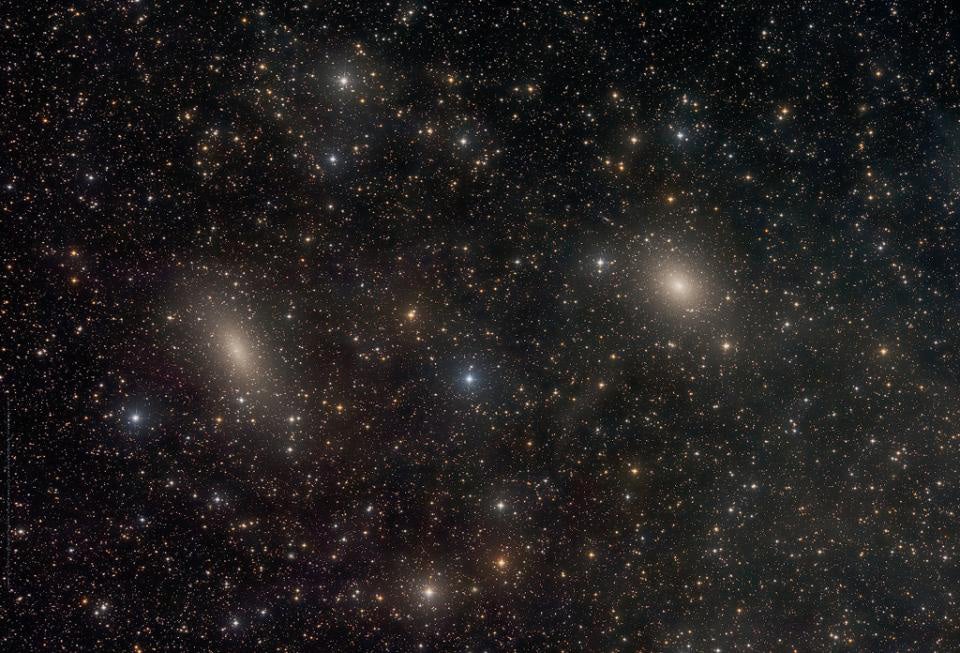
The Andromeda Galaxy (M31) is known for sharing a nearby space with two smaller satellite galaxies, M32 and NGC 205. But fewer people are aware that it also has many more distant satellite galaxies, including two across the border in Cassiopeia. William Herschel found NGC 185 in November 1787. And fainter NGC 147 evaded detection until his son John discovered it in September 1829.
NGC 185 and NGC 147 are only one degree apart in the sky, and just over 7° north of the Andromeda Galaxy. Both are dwarf ellipticals found in M31’s outer halo, but farther out than M32 and NGC 205. Past studies concluded that because of the close proximity of NGC 185 and NGC 147, they must form a gravitationally bound pair — a binary galaxy, if you will.
A 2020 study led by Sangmo Tony Sohn of the Space Telescope Science Institute published in The Astrophysical Journal, found otherwise. Those measurements showed that NGC 147 has a distance of 2.36 million light-years, while NGC 185 is 2.07 million light-years away, placing them both on the near side of Andromeda. Due to Andromeda’s overwhelming gravity, the study concluded that both galaxies “may be a chance alignment rather than a physical pair.”
Like the Andromeda Galaxy, both NGC 147 and NGC 185 are on trajectories to merge with the Milky Way. The latter is the faster of the two, drawing closer at a rate of 472,000 mph (760,000 km/h). NGC 147 is advancing at a more leisurely rate of 365,000 mph (587,000 km/h).









